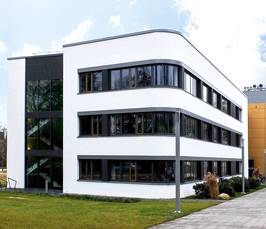Lightwave-Driven Scanning Tunneling Spectroscopy for Ultrafast Surface Science on the Atomic Scale
- PC Department Seminar
- Datum: 16.08.2022
- Uhrzeit: 11:00
- Vortragende(r): Spencer Ammerman
- Department of Physics and Astronomy, Michigan State University
- Ort: Building G
- Raum: Seminar Room 2.06

Many modalities of STM have been developed that expanded the techniques capabilities to include spin, optical, and topological properties. However, these measurements are typically restricted to the extraction of steady-state information. In juxtaposition with STM, optical techniques have become ubiquitous material science tools capable of observing excited-state behavior. Incorporating THz frequency light pulses in far-field optical-pump / THz-probe measurements allows experiments to be performed on the intrinsic timescales of many electronic phenomena. The low spatial resolution of conventional optical techniques constrains experiments to ensemble measurements, limiting their usefulness for studying nanostructures. Terahertz scanning tunneling microscopy (THz-STM) bridges the gap, combining ultrafast time-resolution with ångström-scale spatial resolution. While the spatio-temporal resolution of THz-STM has been realized, maturation of the technology as a scientific tool is still an outstanding goal. Here, we develop terahertz scanning tunneling spectroscopy (THz-STS) to investigate atomically precise 7-atom-wide graphene nanoribbons (7AGNR). With sub-ångström resolution we explore the 3-dimensional LDOS of a 7AGNR. The in-plane spatial distribution of valence and conduction band LDOS is extracted with constant-height THz-STS. We then perform height-dependent THz-STS imaging, revealing a decay of the LDOS on the scale of a few hundred picometers. Finally, the development of an extraction algorithm applicable to both steady-state and time-dependent scenarios paves the way for future ultrafast experiments.